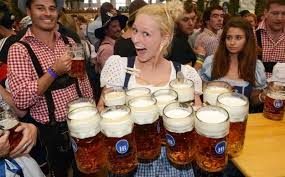Melbourne Festival is an important event on the Australian cultural calendar. Each festival brings a range of dance, theatre, music, visual arts, multimedia and outdoor events from renowned and upcoming Australian and international companies and artists to Melbourne. It offers a wide variety of free family-friendly events.
It was first established in 1986 by the Cain government as a sister festival of the Festival dei Due Mondi in Spoleto and the Spoleto Festival USA held in Charleston, South Carolina. The festival changed its name from the Spoleto Festival Melbourne to the Melbourne International Festival of the Arts in 1990, and then became known as Melbourne International Arts Festival from 2003. It is now simply referred to as Melbourne Festival.
It has had a number of high-profile Artistic Directors including Clifford Hocking, Leo Schofield, Robyn Archer, Richard Wherrett,Jonathan Mills and Kristy Edmunds.
The artistic director for the 2009–2012 festivals was Brett Sheehy. Previously, Sheehy has been artistic director of the Adelaide Festival of Arts (2006–2008), and Festival Director and Chief Executive of Sydney Festival (2002–2005).
In January 2012, Melbourne Festival announced the appointment of Josephine Ridge as creative director for the 2013 festival and beyond. Prior to her appointment Josephine was general manager, then executive director and co-CEO with four artistic directors at Sydney Festival. Josephine has appointed several high-profile arts workers to her creative team, including Louise Neri (Creative Associate – Visual Arts) and Richard Tognetti (Creative Associate – Music).
Melbourne Festival is one of the most significant festivals in Australia together with the Sydney Festival and the Adelaide Festival of Arts. As such, it hosts performances by established artistic companies as well as more independent acts. The 2006 Melbourne Festival hosted a production of Ngapartji Ngapartji with much of the dialogue in the Pitjantjatjara aboriginal language. Melbourne Festival premiered the universally critically acclaimed productions from The Black Arm Band, murundak in 2006, Hidden Republic in 2008 and dirtsong in 2009.



























